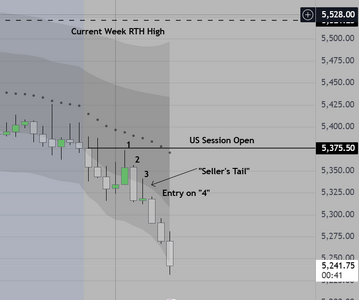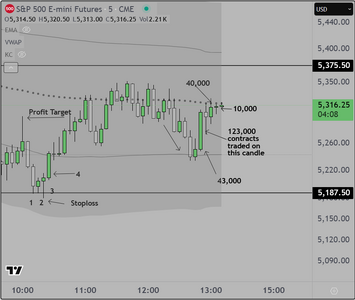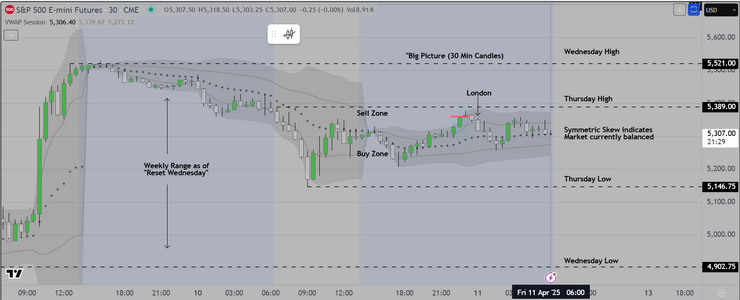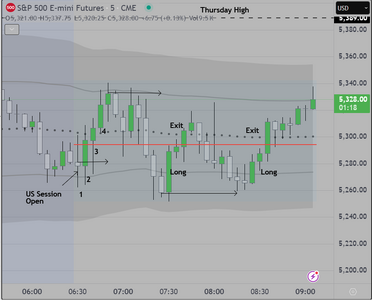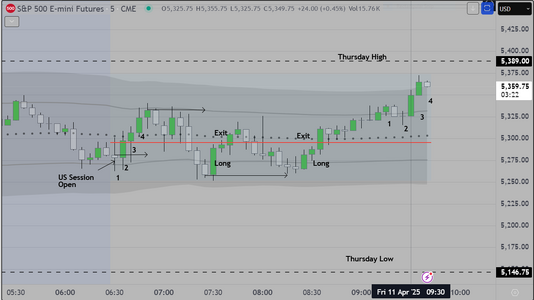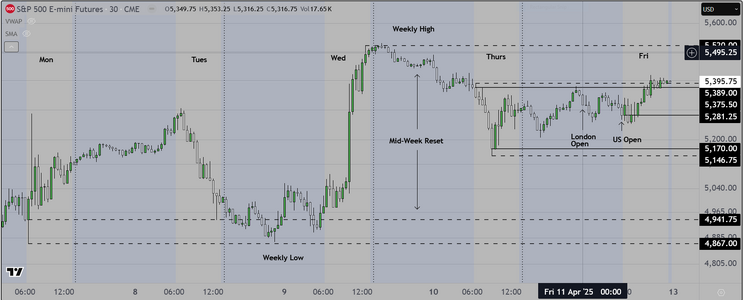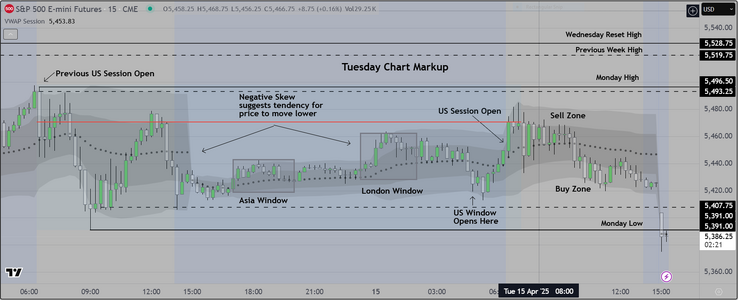Done for the day
Today was a easy day. Once we identified
the price behavior as "trading range" we made
the required changes as follows
1) We change from 15 mn candles to 5 min candles
2) Entries are restricted to the Buy & Sell Zones which
are represented by the 1st Standard Deviation Lines of
our VWAP envelope
3) The first trade is (for us) usually a scalp and so we used
our preferred 1-2-3 Algo with entry at the start of "4"
4) From that point forward we entered at the edges of the
1st SD, trading from the long side only, because the skew
changed from symmetrical (neutral) to positive (long only).
This indicated to us that the institutions were looking to move
the markets higher, trapping participants as they accumulated
inventory for the late day move (which obviously has not happened
yet).
So the way we train students to act in this context is simple. We provide
a "timing window". For the US session that window extends from 1pm
to approximately 4:30pm London time. Within that time frame we show
them how to obtain a reasonable profit by a) identifying the price behavior
b) using the tools to identify valid setups, c) structuring the trade entries
by using the appropriate order types, and d) executing and holding winners
to a logical exit, while exiting losers at or before the stop is hit. Its that simple.
The chart shows the trades. Interestingly we had several students from our original
class watching and some did trade. Two of them had been having difficulty holding
winners. This was their description of the problem. I told them that it was likely that
the REAL problem was they did not accurately identify the context, meaning that they
were entering at times when most professionals were exiting. In plain English, they
were entering late, holding for a short while and then when others were taking profit
they were stuck, or were flushed out at break even (if they were lucky).
Trading range price action is difficult for retail traders. The preferred entry is at the 1st SD band
on a limit order. In volatile markets, this insures that trader gets a reasonable fill
If in contrast, they enter using market orders, they will always pay a sizable spread
meaning that the position had to move further in their desired direction in order for them
to make a profit. Explained this quite a few times, but to no avail. Oh well.
The other option is to stand aside and wait patiently until the market breaks out. There is nothing
wrong with that approach, in fact it often saves retail traders from losing money. Once the market
breaks out and pulls back, they can look for a 1-2-3 and off they go. Usually this is a late day breakout
trade that can be held, sometimes into the last hour.
Good luck

